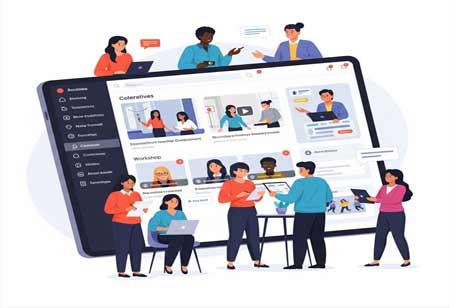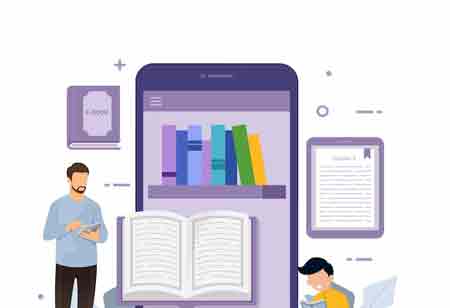THANK YOU FOR SUBSCRIBING
Be first to read the latest tech news, Industry Leader's Insights, and CIO interviews of medium and large enterprises exclusively from Education Technology Insights
How Technology Is Personalizing Learning Through Digital Textbooks
E-textbooks revolutionize education with multimedia, accessibility, affordability, and personalized learning, benefiting disabled and remote individuals. Future advancements include Augmented Reality, AI, gamification, blockchain, and environmental sustainability.

By
Education Technology Insights | Friday, August 29, 2025
Stay ahead of the industry with exclusive feature stories on the top companies, expert insights and the latest news delivered straight to your inbox. Subscribe today.
FREMONT, CA: Education is undergoing a profound transformation, propelled by rapid technological advancements. Among the most notable developments is the rise of e-textbooks, digital versions of traditional textbooks that offer distinct advantages over their print counterparts. In recent years, e-textbooks have developed from static documents into active learning tools, integrating multimedia elements such as videos, animations, and interactive simulations. These enhancements bring educational content to life, making it more engaging, accessible, and easier to comprehend. Many e-textbooks also feature built-in assessment tools, enabling students to check their understanding and receive instant feedback, thus promoting more active and personalized learning.
The impact of e-textbooks on learning is multifaceted, offering significant advantages that enhance the educational experience. Their accessibility ensures that students can access materials from anywhere with an internet connection, making them particularly beneficial for individuals with disabilities or those in remote areas. E-textbooks are often more affordable than traditional print versions, as they eliminate the costs associated with printing and distribution. Moreover, their interactive features enhance student engagement and comprehension, while customization options allow personalized learning tailored to individual preferences and paces. Additionally, e-textbooks can be updated in real time to incorporate the latest research and information, ensuring students can access current knowledge.
The future of e-textbooks is poised for significant advancements, driven by innovative technologies that enhance the learning experience. Augmented Reality (AR) and Virtual Reality (VR) pave the way for immersive educational environments, allowing students to virtually participate in historical events or engage in interactive scientific experiments. Artificial Intelligence (AI) is another transformative force, enabling e-textbooks to deliver personalized learning experiences tailored to individual student needs and learning paces. Integrating gamification elements—such as points, badges, and leaderboards—adds a motivational dimension, making learning engaging and enjoyable. Furthermore, e-textbooks foster collaborative learning through social features that enable students to share knowledge and work together seamlessly. These innovations collectively underscore the promising trajectory of e-textbooks in shaping the future of education.
The Convergence of AI and E-Textbooks
Integrating artificial intelligence (AI) into e-textbooks revolutionizes education by enhancing personalization and interactivity. AI algorithms analyze individual learning styles, paces, and performances to create tailored learning paths, ensuring that educational content aligns with each student’s needs. Intelligent tutoring systems powered by AI further enrich the experience by providing real-time feedback, answering queries, and offering detailed explanations as required. Moreover, adaptive content enables e-textbooks to dynamically adjust material based on a student’s progress and comprehension, striking a balance between challenge and accessibility.
The Role of Blockchain in E-Textbook Security and Ownership
Blockchain technology plays a pivotal role in enhancing the security and accessibility of e-textbooks. Ensuring secure content delivery prevents piracy and unauthorized access and safeguards intellectual property. Additionally, blockchain enables transparent licensing, allowing seamless digital content ownership and usage rights tracking, simplifying legal access for educators and students alike.
The Impact of E-Textbooks on the Environment
E-textbooks also contribute significantly to environmental sustainability. By eliminating the need for paper, ink, and physical transportation, they substantially reduce the carbon footprint associated with traditional textbooks. This shift toward digital resources promotes a more sustainable and eco-friendly education system, aligning with global efforts to combat environmental challenges.
The future of e-textbooks is promising, potentially transforming education and empowering learners. By leveraging emerging technologies and addressing the challenges, we can create a future where e-textbooks are seamlessly integrated into the learning process, enhancing student engagement, improving outcomes, and fostering a more sustainable and equitable education system.







